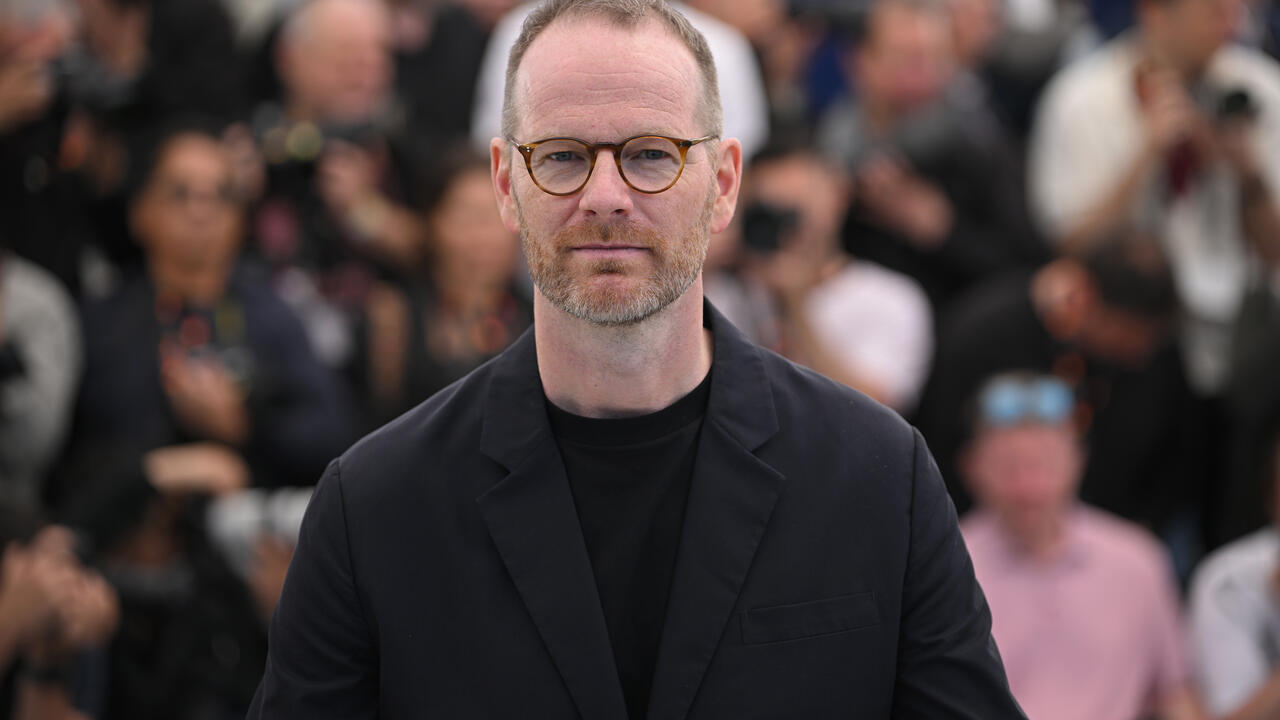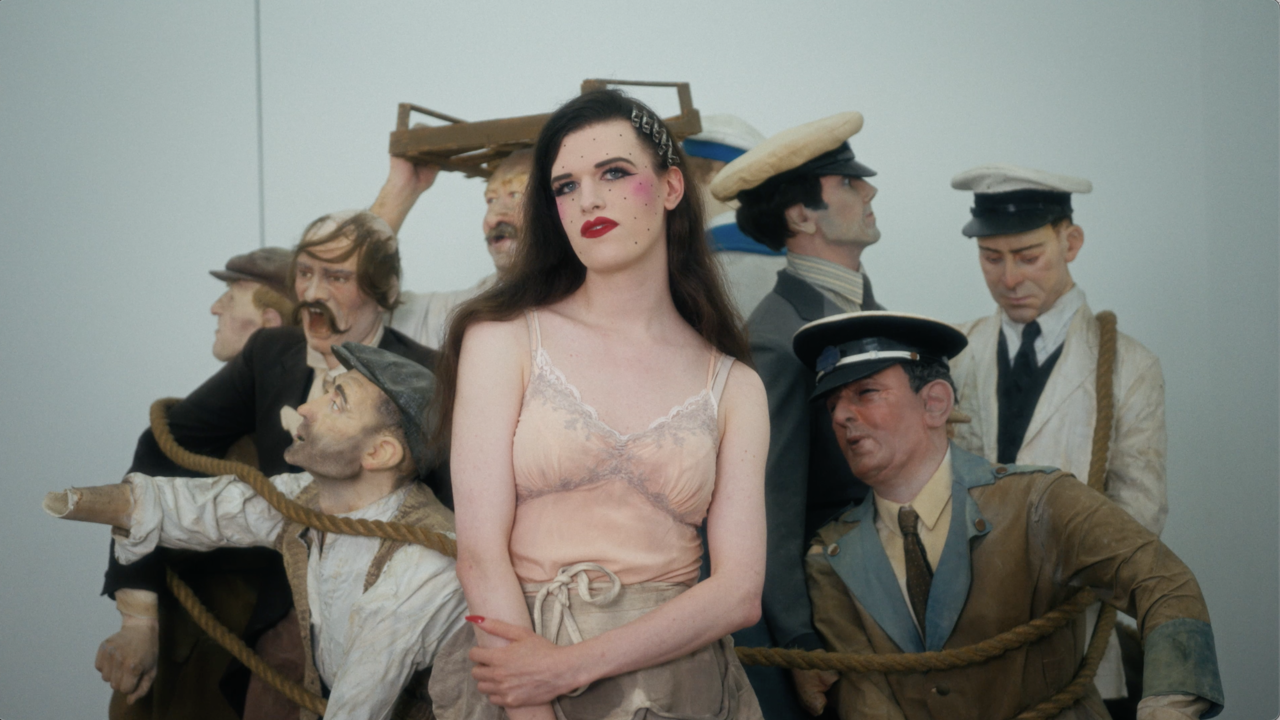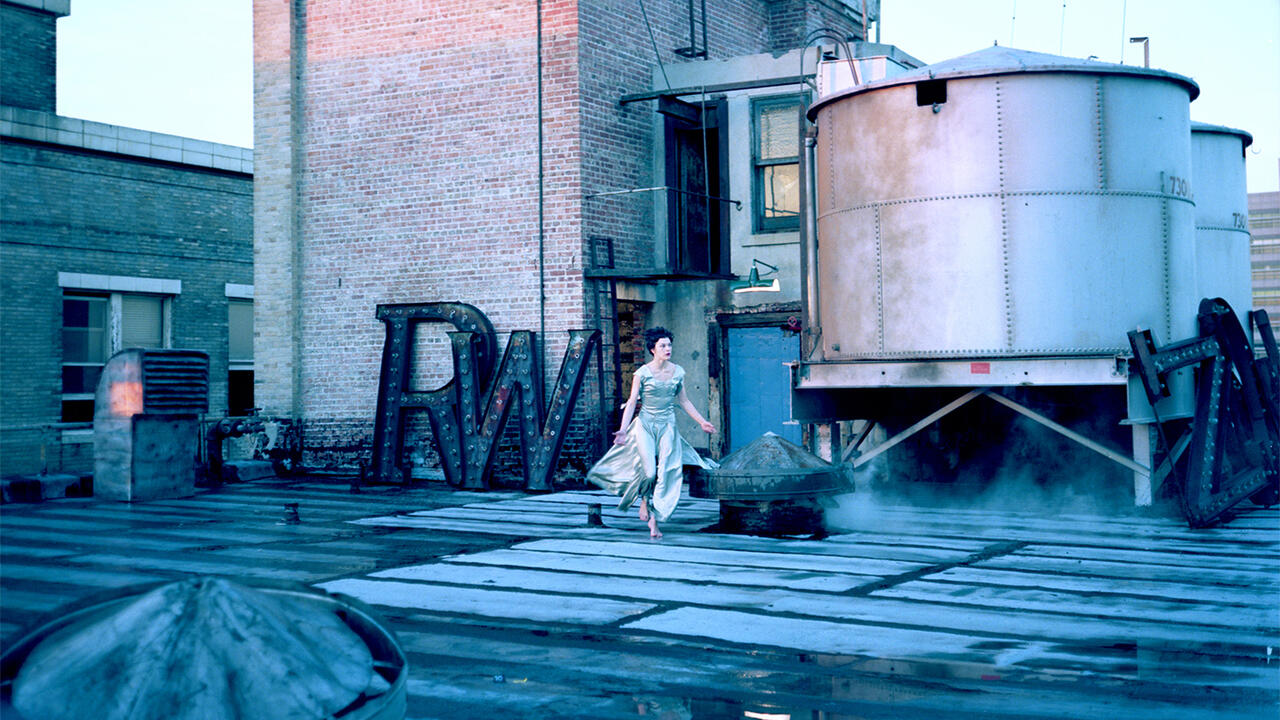Focus Interview: Lucy Clout
Soap-opera small talk and speech as a gesture
Soap-opera small talk and speech as a gesture

Amy Sherlock What are you working on at the moment?
Lucy Clout I’m working on a Jerwood/Film and Video Umbrella award commission that considers what happens when categories of speech, such as wittering or commenting, live on via digitization. These informal kinds of language are examined as a significant mode of communication in their own right. The new work will consider the consequences of re-watching and reinterpreting this speech, made possible by improvements in camera technology, data compression, torrent distribution etc. The test site for this is an image of the lips of an extra in a 1990s Australian soap.
The first piece of filming was an interview with a forensic lip reader. She described and acted out the consistencies of spoken speech. Importantly, for my purposes, she performed doubt about the preciseness of communication through the animated mouth. She also read the lips of one of the extras.
I use soap operas and extras as examples of a speech designed to disappear. After all, ’90s soaps pre-date ‘watch again’ services or dvd box-sets. The plots are filled with redundancies – family members never mentioned again, deaths forgotten, character ages that shift as required. Continuity errors are understood by the audience as somehow beside the point. There are no callbacks in these products to reward the keen-eyed viewer.
For me, the extras’ mouths are the pinnacle of speech being used for continuity of affect rather than as argument. Extras actually used to be instructed to repeat ‘rhubarb rhubarb’ or ‘whalla whalla’. In more recent shows, they’re asked to discuss their journey to work or something else. I’m intrigued by that: is it a change in the language of believability, or a shift in how the extras want to be treated? That line between prattling and acting is interesting.

AS We acknowledge the disposability of speech when we talk about a ‘throwaway comment’ as something meaningless. But this kind of ‘emptyʼ speech still performs a function.
LC Yes, it’s the speech we might not expect to be held to account. It isn’t about creating a text but about another effect, so the close reading of that speech out of context has strange consequences.
AS This seems like a continuation of your exploration – in films such as Baby Baby Baby Baby Oh Baby: On the Reading of Emoticons by Infants and Newborns, 2012. (Why the Fuck do Faces Need Noses?!?) (2012) or Shrugging Offing (2013) – of speech as a gesture, as something embodied, which is sensed or felt as well as literally understood.
LC Totally. My interest in speech disfluencies isn’t necessarily because of their opposition to literal meaning but because they are a different part of language, one which acts as context, intimacy and also, importantly, as an assertion of subjective presence.
AS The embodied voice reassures you that there is someone there with you. Is this why a lot of your videos address the audience directly?
LC There’s an address and a gap in many of the videos: eye contact not quite made, specificities of audience not quite understood. The work must acknowledge desire, and the direct address is one way of claiming that. Whilst making Untitled (2011) and Baby Baby …, I was thinking about Skype therapy, web-cam masturbation and the intimate possibilities of bodies being affectively addressed without eye contact.
Shrugging Offing talks of the overwhelming desire for the presence of others, for skin to be touched. In that video, we see those sensations being elicited, chronicled and bickered about online. I used exclamations from group spot-squeezing videos posted online (most often the males have the spots and the females squeeze or chronicle the squeezing). The more time I spent with them, the more apparent it became that the screams perform different functions: they might be a kind of flirting, an indication of gleeful horror or ecstatic teamwork. They are group activities, but are usually made with the understanding that the resulting video will be distributed online, creating a doubling of the audience. I always want to know how the body of the viewer is affected when viewing art, and whether this constitutes an aggression on the part of the artist.
AS I feel like the notion of ‘juicy gossip’, which suggests that words are somehow tactile or sensual, characterizes a lot of the ideas around the pleasure (maybe guilty?) of social exchange in your work.
LC In Robert Dunbar’s (totally pop-science) book Grooming, Gossip and the Evolution of Language (1996), he claims that humans created language not through hunting or arguing but as a more efficient way to implement social ties. Humans living in larger groups no longer had the time for the grooming rituals of their ape ancestors.

AS So gossip becomes this kind of bridge between the tactility of chimps grooming and the symbolic register of humans talking? Tactile speech is the basis of autonomous sensory meridian response (or ASMR) videos, like those you use in Shrugging Offing, in which sounds are somehow supposed to provoke an involuntary bodily reaction.
LC ASMR videos are created to evoke a particular (though disputed) feeling within the body of the audience. They are also touted as sleep aids. The videos tend to involve women who speak in low, whispering voices, talking in soothing if banal ways to the imagined audience. This can take the form of role-play, with the woman in the video dragging make-up brushes across the screen whilst playing a beautician. It could also be small talk, or the systematic exploration of particular sounds such as the wrapping and unwrapping of gifts. The majority of ASMR performers are women, but the audience contains women too. I don’t read these videos as describing a gender essentialism, but there is obviously a performance of mothering and a form of eroticism within them. They speak to the societally sanctioned ways in which a women’s desire to be seen can be realized.
Dunbar postulates that online interactions can never replace face-to-face ones; I think that humans are highly skilled in sourcing what they want emotionally and physically. The phenomena of ASMR forums, audiences and makers describe that. Importantly, though, he suggests that speech can replicate physical sensations previously generated through touch. I see this in the spot-squeezing videos as well as in the Australian soaps. The division between speaking and touching isn’t all that clear-cut.
AS And what role does the internet play in all of this?
LC The internet is simply the site of encounter/liveness in some of my work. It’s a place where I can observe and explore desire using search logarithms and conversations with strangers. I’m deeply interested in what humans want from other humans.
Lucy Clout is based in London, UK. In 2012, she had a solo show at Limoncello, London, and was included in group exhibitions at Oriel Sycharth Gallery, Wrexham, UK, and BACKLIT, Nottingham, UK. Her work is currently includued in the Jerwood/Film and Video Umbrella Awards exhibition, ‘What Will They See of Me?ʼ, which runs at Jerwood Space, London, until 27 April and Centre for Contemporary Arts, Glasgow, UK, until 21 April.






















